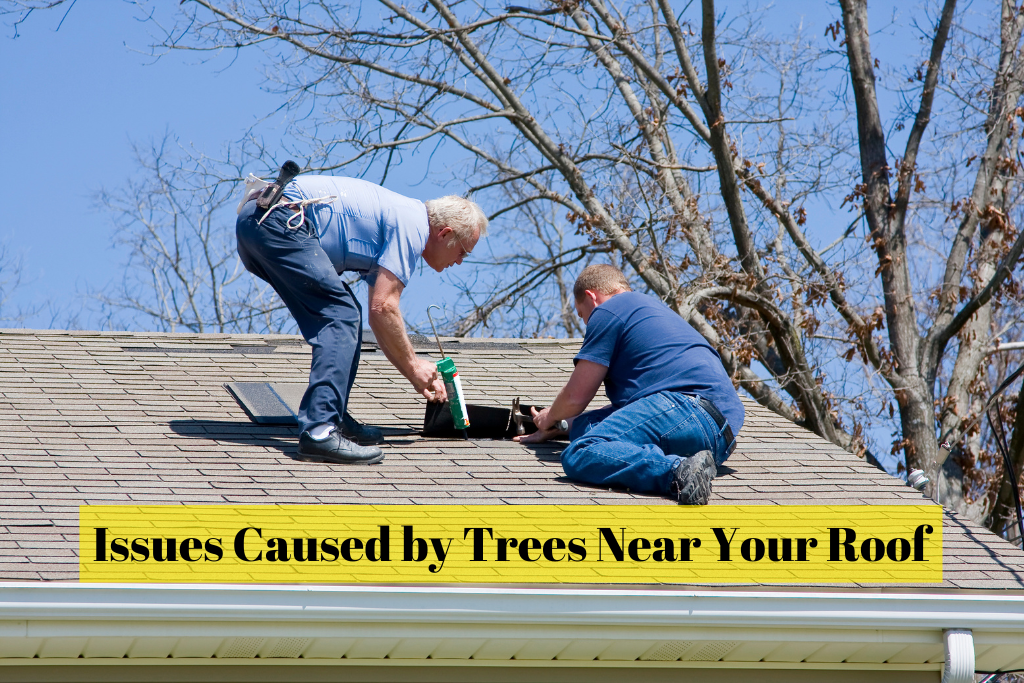Introduction
The lush presence of trees around a home can create a picturesque landscape, but those same trees can potentially affect your roof in unexpected ways. Whether it’s due to falling branches, accumulating debris, or excessive moisture, trees can have a long-term impact on your roof’s durability. In this article, we’ll explore how trees impact your roof and the best strategies to maintain both the trees and your roof to avoid any negative consequences.
How Trees Provide Value to Your Roof?
Before discussing the risks, it’s worth mentioning that trees can offer several advantages to your roof, particularly when properly positioned and maintained:
- Cooling Effect: Trees provide natural shade that helps to lower the surface temperature of your roof. This reduced heat exposure helps prevent damage to roofing materials and decreases the need for air conditioning, lowering energy bills.
- UV Protection: Constant exposure to sunlight can break down the materials on your roof. Trees provide UV protection, especially for roofs made of shingles or other sun-sensitive materials.
Common Issues Caused by Trees Near Your Roof
However, the proximity of trees to your home can lead to several roof-related issues if not monitored closely. The following are some of the most common problems caused by nearby trees:
- Falling Branches: Even small branches can cause damage to shingles or roof tiles if they fall during a storm or high winds. Large branches can puncture roofs and cause significant structural damage, requiring expensive repairs.
- Roof Debris: Leaves, pine needles, and small branches that fall from trees can accumulate on your roof, trapping moisture and causing rot. This debris can also block gutters, leading to water backflow and potential leaks.
- Increased Animal Activity: Trees near your roof can act as bridges for animals like squirrels, raccoons, and birds. These animals may seek refuge in your attic or damage your roof by chewing on roofing materials or creating nests.
Moisture and Its Impact on Roofing Materials
One of the most critical concerns related to trees near your roof is how they can affect moisture levels:
- Moisture Traps: Trees can create shaded areas that prevent proper evaporation of water after rain. This excess moisture can lead to mold, algae growth, and the deterioration of roofing materials like shingles or wood.
- Moss Growth: The constant shade provided by overhanging trees, combined with moisture, creates the perfect environment for moss to thrive. Moss can penetrate roofing materials, causing them to lift and exposing your roof to leaks.
Structural Risks from Root Systems
While the majority of concerns about trees focus on their branches and leaves, their root systems also pose indirect risks to your roof:
- Foundation Shifts: Trees with expansive root systems planted too close to the house can cause foundation instability. This can affect the entire structure, including your roof, which might shift or develop cracks.
- Drainage Issues: Roots absorb moisture, and if trees are uprooted or their root systems are damaged, this can lead to poor drainage around the house. Water that pools around the foundation can create problems for the roof’s drainage system as well.
Steps to Mitigate Tree-Related Roof Damage
Fortunately, homeowners can take several preventative measures to limit tree-related roof damage:
- Strategic Tree Pruning: Keep branches trimmed away from your roof to avoid damage from falling limbs or debris buildup.
- Regular Roof Maintenance: Schedule periodic inspections to assess any damage caused by nearby trees and to address issues such as blocked gutters or moss growth.
- Safe Tree Planting: If you plan to plant new trees, make sure they are far enough from your house to avoid root damage or overhanging branches.
Conclusion
While trees are a wonderful asset to any property, they can also pose a challenge to the longevity of your roof. By being proactive about tree and roof maintenance, you can enjoy the benefits of trees while minimizing their impact on your home. Careful monitoring and regular inspections are essential for maintaining both a healthy roof and landscape.





Comments